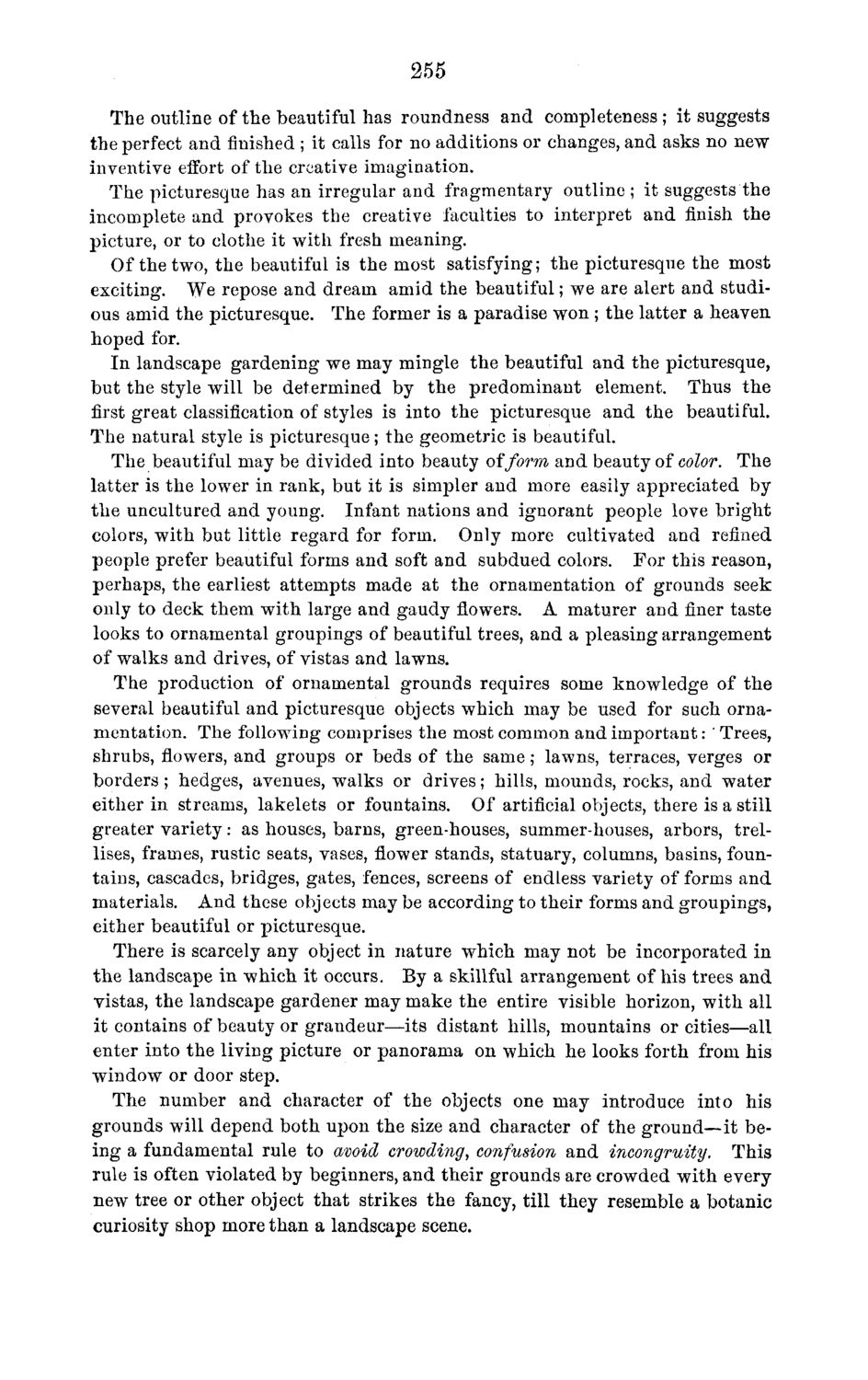| |
| |
Caption: Board of Trustees Minutes - 1870
This is a reduced-resolution page image for fast online browsing.

EXTRACTED TEXT FROM PAGE:
255 The outline of the beautiful has roundness and completeness; it suggests the perfect and finished ; it calls for no additions or changes, and asks no new inventive effort of the creative imagination. The picturesque has an irregular and fragmentary outline ; it suggests the incomplete and provokes the creative faculties to interpret and finish the picture, or to clothe it with fresh meaning. Of the two, the beautiful is the most satisfying; the picturesque the most exciting. We repose and dream amid the beautiful; we are alert and studious amid the picturesque. The former is a paradise won ; the latter a heaven hoped for. In landscape gardening we may mingle the beautiful and the picturesque, but the style will be determined by the predominant element. Thus t h e first great classification of styles is into the picturesque and the beautiful. The natural style is picturesque; the geometric is beautiful. The beautiful may be divided into beauty of form and beauty of color. The latter is the lower in rank, but it is simpler and more easily appreciated by t h e uncultured and young. Infant nations and ignorant people love bright colors, with but little regard for form. Only more cultivated and refined people prefer beautiful forms and soft and subdued colors. For this reason, perhaps, the earliest attempts made at the ornamentation of grounds seek only to deck them with large and gaudy flowers. A maturer and finer taste looks to ornamental groupings of beautiful trees, and a pleasing arrangement of walks and drives, of vistas and lawns. The production of ornamental grounds requires some knowledge of the several beautiful and picturesque objects which may be used for such ornamentation. The following comprises the most common and important: ' Trees, shrubs, flowers, and groups or beds of the same; lawns, terraces, verges or borders ; hedges, avenues, walks or drives; hills, mounds, rocks, and water either in streams, lakelets or fountains. Of artificial objects, there is a still greater variety: as houses, barns, green-houses, summer-houses, arbors, trellises, frames, rustic seats, vases, flower stands, statuary, columns, basins, fountains, cascades, bridges, gates, fences, screens of endless variety of forms and materials. And these objects may be according to their forms and groupings, either beautiful or picturesque. There is scarcely any object in nature which may not be incorporated in t h e landscape in which it occurs. By a skillful arrangement of his trees and vistas, the landscape gardener may make the entire visible horizon, with all it contains of beauty or grandeur—its distant hills, mountains or cities—all enter into the living picture or panorama on which he looks forth from his window or door step. The number and character of the objects one may introduce into his grounds will depend both upon the size and character of the ground—it being a fundamental rule to avoid crowding, confusion and incongruity. This rule is often violated by beginners, and their grounds are crowded with every new tree or other object that strikes the fancy, till they resemble a botanic curiosity shop more than a landscape scene.
| |